- Home
- Deborah Blum
The Ghost Hunters Page 2
The Ghost Hunters Read online
Page 2
So James refused to accept the easy explanations and absolutes dictated by either side. He went further than that, even, deliberately challenging the traditions of both science and religion by choosing to explore the supernatural, to investigate and even support tales like that of the woman on the bridge.
His work on all fronts—psychology, philosophy, psychic—confirmed his own inclination, that the most important lessons might be learned in the most unexpected places.
FROM CHILDHOOD, William James breathed the air of pure, undiluted unpredictability. It was the atmosphere of life with his sometimes brilliant, always erratic father, Henry James Sr. Born into a wealthy New York family, married to a wealthy woman, the elder James had enough income to indulge his intellectual quests—and the will to do so. Henry’s determination had been honed by his own moralistic father and disciplined mother. But he’d been shaped even more by a horrific accident when he was teenager—and by his sense of the dark supernatural forces behind it.
At the time of the accident, in 1824, Henry was thirteen years old, a student at the privileged Albany Academy in New York. In science classes, the boys were studying principles of flight. In one series of experiments, they ignited paper balloons, dipped in turpentine, and watched the fire’s heat drive the balls upward. When burning remnants fell to the ground, the boys stamped them out. One day, however, an errant wind blew a balloon into a nearby stable. Sparks sizzled in the hay. Ever impetuous, young Henry James dashed into the building to beat out the fire. Instead, the rising flames set his trousers ablaze, charring his right leg almost to the bone. Surgeons amputated it below the knee, a torturous operation that involved sawing through skin and muscle and then snapping the bone in two. Even so, the damaged leg continued to fester. A year later, the doctors sawed off another section of leg, now spotted black with gangrene. This time the cut was above the knee.
As a result of the accident and surgeries, Henry was bedridden for more than three years. He became increasingly dependent on the alcohol he drank to ease the pain. His father worried over him. But his mother, Catherine, refused to allow pity, or self-pity, into the sickroom. If Henry’s father showed too much sympathy, she kept him away from his son. She was a woman gentle in manner but powerful in faith. It was God’s will, according to her beliefs, and she wanted her son to find strength in the Lord’s sure judgments.
Trapped and miserable, the boy turned to anger instead. And fear. In the years to come, Henry would divide his life into the magical, sunlit childhood before God had ruined his leg with “his dread hand” and the bitter years that followed. The once happy child would grow estranged from his parents. He became a drinker, a gambler, a wealthy drifter—and a man in search of protective cover. Out there, he knew, was a deity on the prowl, in search of bloody retribution for sins. And who knew what they might be? Undue sympathy, lack of prudence, a thoughtless scramble into a burning stable? “I am sure,” he wrote once, “no childish sinews were ever more strained than mine were in wrestling with the subtle terror of His name.”
Henry James Sr. wrestled also with the demons of depression, a tendency that his children would inherit. Even after he was an established man, with a wife and family, he would describe his life as “not by any means a victory, but simply a battle.” He slowly overcame his alcoholism, and in his mid-twenties entered the Princeton Theological Seminary. He wanted to know better the mind of that vengeful God: “When the fire burns my incautious finger, I do not blame the fire, and why? Because I feel that fire acts in strict obedience.” With the Lord’s dreaded hand hovering over his, James lasted at the seminary only a year. He walked away in 1838. But during that year, he befriended the sisters of one of his classmates, and in 1840 he married the elder, Mary Walsh, after convincing her to abandon her allegiance to the Presbyterian Church.
Foreshadowing their life to come, the newlywed Jameses did not purchase a house of their own. Instead Henry and Mary moved into a hotel, the newly built Astor House. Gleaming with polished granite, with more than three hundred rooms, an interior garden, and brilliant flower beds, the five-story Astor House was among the newest and glossiest structures on South Broadway. Guests entered through a Grecian portico and stayed in rooms boasting innovations such as individual locks in doors and running water in bathrooms. The hotel, near the intersection of Broadway and Ann Street, sat across from Mathew Brady’s photo studio and P.T. Barnum’s newly opened, flag-festooned American Museum. Carriages clattered past, down a promenade designed to echo the elegant thoroughfares of Paris and London. Gas-jet lights glittered along Broadway at night, from its southern tip at the Battery Gardens to its northern boundary, where it merged into the country roads.
The Jameses lived at Astor House for more than two years. Their oldest son, William, was born in the hotel on January 11, 1842. Within the year, they moved into a house in Washington Square, and their second son, Henry Jr., was born in 1843.
To his diary, James Sr. confessed that he wished God would take Willy and Harry before they were old enough to become sinners. No one stayed untarnished for long, and the Lord’s vengeance could only be an angry breath away. As his depression and his fears rose to choke him, he sold the house and fled to England, towing his wife, sons, and sister-in-law with him.
It was there, while he attempted a water cure, a popular remedy for soaking one’s ills away, that a fellow sufferer offered comfort by describing his crisis as a rite of passage. She explained that, according to the eighteenth-century Swedish mystic Emmanuel Swedenborg, James’s breakdown was merely a “vastation,” a turning point that would lead him to new health and harmony with life.
The elder James hesitated to pursue the idea; his doctors had warned him not to overtax his brain. But finally “I resolved that in spite of the doctors, that instead of standing any longer shivering on the brink, I would boldly plunge into the stream”—out of the dark biblical landscape and into the comforting current of a spiritual vision.
TO SCIENTISTS, from the very first, the 1840s sang of achievement—the spreading success of the telegraph, the development of surgical anesthesia, the publication of Charles Darwin’s The Voyage of the HMS Beagle. From that perspective, Emmanuel Swedenborg was an anachronism, dead since 1772, and a failure, since he was in fact a scientist turned seer.
Born in Stockholm in 1688, the son of a Lutheran bishop, Swedenborg had trained as an engineer with a specialty in metals. As a student, he’d traveled to England in his early twenties to learn from such renowned scientists as Isaac Newton and astronomer Edmund Halley. By 1744 he was comfortably set as an administrator of mining ventures for the Swedish government.
That year, though, while traveling on business, Swedenborg experienced a life-altering vision. He was relaxing at the tavern of his London hotel when, he said, a mist formed before his eyes and then separated into a silvery mass of snakes. As the reptiles coiled around the floor, he caught the outline of a man cloaked by shadows in the corner of the room. The following night, when he returned to the tavern, the mist and the snakes again swathed the room. The figure stepped out of the corner, Swedenborg said, and identified himself as the Lord God. The Swedish scientist left London with a new mission—to explain the real meaning of the Scriptures to the world. God would tell him what to write and give him the gift of far sight.
Swedenborg abandoned his scientific career. He became a wraith of a man with a thin, sharply lined face and sunken eyes. He lived on sugared coffee and cakes, which he believed aided a newly fragile digestion. He spent hours in a trancelike state, dream-writing his books on heaven and hell, the spirit world that inhabited our planet and others. For the rest of his life, he spread his version of the gospel, invoking the spirits, which were hidden to all else, by demonstrating his newfound powers.
In his most famous demonstration—investigated by German philosopher Immanuel Kant—Swedenborg disrupted a garden party by suddenly announcing a firestorm in Stockholm, some three hundred miles away. Staring at a clear evening sky, Sw
edenborg described the fire’s progress, street by street and building by building, to the disbelieving company. Two days later, a messenger from Stockholm confirmed every detail. Kant concluded that the case showed “beyond all possibility of doubt” that Swedenborg did indeed possess an extraordinary visionary gift.
There were other tales, rumors of mysterious insights into lost letters, revelations about dead relatives. But Swedenborg didn’t specialize in showy clairvoyance. His major teaching, the one that would so catch the imagination of Henry James Sr., was called a “theory of correspondence.” It proposed a tangible connection between the material life of this world and the spirit world, unseen cords that bound inhabitants on both planes together.
Life here, Swedenborg said, is paralleled there, so that our decisions can influence spirits, their desires influence ours. Everything we touch resonates in that alternate world. Every action is an interaction with those on the other side. To be aware of that connection with all God’s other realms, people needed only to let go their earthbound egos. Self-love, self-hate, self-reneciion—all of that creates a kind of blindness, an opaque wall of self through which we cannot see. And evil spirits can encourage that, Swedenborg said. They can prod us into looking obsessively inward instead of out into the Lord God’s miraculous world. There is no real sin in this universe, except for perhaps a willful refusal to see the wonders spread before us.
To his followers, science offered nothing to equal Swedenborg’s visionary powers—or his ability to offer comfort in difficult times. Not long after his death from a stroke, English adherents established the New Church, dedicated to Swedenborgian theology. American followers convened the General Convention of the New Jerusalem in 1817, also dedicated to his teachings.
In accepting Swedenborg, Henry James Sr. believed that he had found a new foundation for his life. His fears and sorrows could be blamed on “ghostly busybodies” seeking to control him. They had infested his life, these spiritual “vermin revealing themselves in the tumbledown walls of our old theological hostelry.” With that knowledge, he could fight them off and accept himself as a goodly creation of God. He could follow Swedenborg’s lessons and see failings and personal crises as tests only; accept strengths and blessings as gifts from the Lord God, without self-congratulation. Therein lay the making of a steady man, a life that much closer to heaven.
Determined to be that man, Henry James Sr. returned with his family to New York. By 1848, he and Mary had two more sons, Wilkie and Bob, and a daughter, Alice. The family moved into a newly built brownstone in Manhattan, just north of Washington Square, along with all the servants that Mary felt necessary to buffer her from domestic duties. The house was also inhabited—as Bob would say resentfully years later—by their father’s “idols, the virgin adoration, the faith in miraculous agencies, all ... the mysteries of the dead.”
Swedenborg’s unearthly specters encircled the James children’s life. When Alice suffered anxiety attacks, her father blamed an intrusive spirit. When William refused to obey his father, the rebellion was undoubtedly made worse by spirit influences. Bob, often the most openly angry of the children, complained that he had never been able to discover a way to achieve simple faith. He had never learned to accept organized religion. The ability to believe “the bed bug priests” demanded comfort and ignorance, and he possessed neither quality.
If there was an afterlife, Bob wrote to his brother William many years later, he did not expect to see their father there. Actually, he hoped not to. There was an ominous possibility that Henry James Sr. would appear trailing Swedenborgian spirits like translucent fish hooked onto a spectral line. Bob James found himself longing for the days of the Crusades, when faith, he thought, must have been as simple as slaughtering a few heathens in the name of God.
BOB’S CRAVING for a simple Christian faith, uncluttered by interfering spirits, defied not just his home life but the times themselves. To the dismay of both scientists and clergymen—united in their distaste for all things superstitious—popular fascination with the spirit world began to spread like a grass fire, driven by that rising sense of moral uncertainty and sparked by events on both sides of the Atlantic. In the year 1848, as the James family settled into New York, a book published in England became an unexpected best seller and—scholars would later say—persuaded generations of readers that believing in ghosts was an acceptable thing: The footsteps were coming down the hall. They belonged to the son of the house, poor young man. He’d been sickly so long, caught in one of those odd fevers that just kept burning its way back.
He liked to get up, sit with the family in the parlor. It was hard for him, though. His wobbling walks to the sitting room came less, and less often. His leather shoes, so little used, began to dry out, despite attempts to polish them soft.
That was the sound. Not that faint groan of a floorboard. The squeak of dry leather. Step, squeak, step, squeak.
The housekeeper was sitting with his sister when they heard him. They hadn’t expected him; his parents had sent him from their English country home to Portugal, hoping that the gentler climate would ease the illness. He must have returned just now, in the night. The servant caught up her candle, ran to help. The house was dark, the stairs unlit. Surely he would need light on the way to his room.
Step, creak, step. She couldn’t quite catch up with him. There was only the sound of his footsteps moving up the stairs. She hurried after him, heading for his bedroom.
The door was closed. The hall was empty. She opened the door of his room. The candlelight danced across the neatly made bed, the suddenly silent space.
They were almost expecting the telegram when it arrived. The strip of paper, the terse words, telling them that he had died in Lisbon that night, about the time they’d heard those creaking footsteps making their patient way back to his room.
The supernatural account, written out by both servant and mistress, was one of hundreds collected in The Night Side of Nature, which turned its author from a little-known writer of children’s stories to a celebrity advocate for the occult.
Ghost stories spilled from every page of The Night Side: Widowers saw their dead wives walking in the street. Murderers stepped back screaming from the bony brush of their victims’ fingers. A father dreamed three times that his son died in a wagon accident, dismissed it as superstition, and changed his mind only on the day that the child fell from a friend’s wagon and was crushed by the wheels. A family rented a house so haunted by mysterious voices that their servants left them; their child woke in the night, demanding to know who kept crying.
The author, Catherine Crowe, gathered her tales from friends, from newspaper accounts, other books, letters, and diary excerpts. Crowe had lived in Germany for several years before returning to her native Scotland. She took her book’s title from a German term for night at its darkest—on the side of Earth farthest from the sun. Nature’s night side in the hours after midnight, when tree branches curve like claws and shadows warp on the wind. But the German term that readers best remembered from her book was poltergeist. She was credited for introducing the word into the English language.
The Night Side stayed in print for more than fifty years, convincing thousands of readers that life remained, at its borders, a place of mystery, inexplicable and often terrifying. But Crowe didn’t intend her book as merely an anthology of ghost stories. She intended it as a manifesto. “I avow, that in writing this book, I have a higher aim than merely to afford amusement,” Crowe insisted in her introduction. “I wish to engage the attention of my readers, because I am satisfied that the opinions I am about to advocate, seriously entertained, would produce very beneficial results.”
She wanted to prod scientists into conducting serious investigations of the apparitions she described. She didn’t deny that ghost stories were often built on rumor and exaggeration and outright falsehood, but she urged the research community to look beyond, to see the rare flicker of something genuinely supernatural. “If I could only
induce a few capable persons, instead of laughing at these things, to look at them, my object would be attained, and I should consider my time well spent.”
Crowe flung that hope, that challenge, against a solid wall of scientific hostility. In general, nineteenth-century scientists felt a personal responsibility not to investigate claims of the supernatural but to debunk them out of hand. One British physician had published a book, An Essay towards a Theory of Apparitions, which held that ghost sightings floated out of mentally defective brains and that the best cure was “the care of an intelligent physician.” Another proposed that ghosts resulted when the brain was excited by an overactive circulatory system and a wild influx of blood into the nervous system. Others simply discussed the human tendency to tumble into hallucinations. None allowed the idea that the ghost seers in question had actually seen something.
No wonder, then, that Crowe felt compelled to say that the stories she collected came not from asylums but from respectable citizens relating a moment of shock in otherwise ordinary lives. No wonder her tone was so defensive as she asked for scientific contempt to be replaced with humility. No wonder her demands were so modest: “I assert that whether these manifestations are from heaven or hell, or whether they exist at all, is a question we have a right to ask.”
IN THE VERY YEAR that Crowe’s book was published, a pair of spirit mediums appeared in the unlikely setting of a New York farm town. In the same sense that The Night Side of Nature was considered the most influential publication of its kind, these mediums would come to be hailed as the most revolutionary ghost talkers of their time. In the beginning, though, they were no more than a couple of farm girls, living in Hydesville, New York, which was no more than a scatter of wooden houses, dirt roads, and small farms, about twenty miles from Rochester.

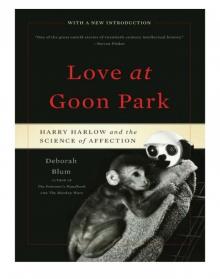 Love at Goon Park: Harry Harlow and the Science of Affection
Love at Goon Park: Harry Harlow and the Science of Affection The Poison Squad
The Poison Squad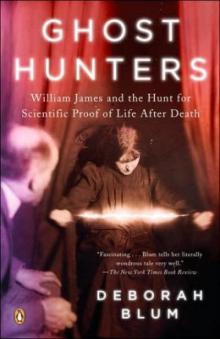 Ghost Hunters: The Victorians and the Hunt for Proof of Life After Death
Ghost Hunters: The Victorians and the Hunt for Proof of Life After Death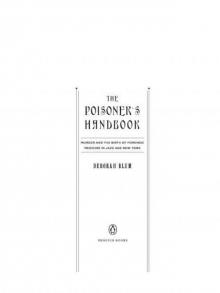 The Poisoner's Handbook
The Poisoner's Handbook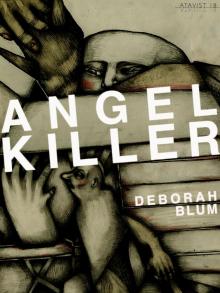 Angel Killer
Angel Killer The Best American Science and Nature Writing 2014
The Best American Science and Nature Writing 2014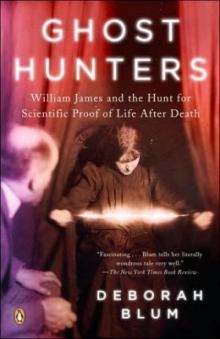 The Ghost Hunters
The Ghost Hunters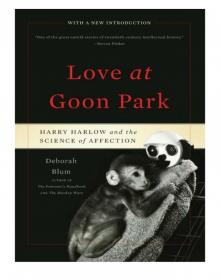 Love at Goon Park
Love at Goon Park